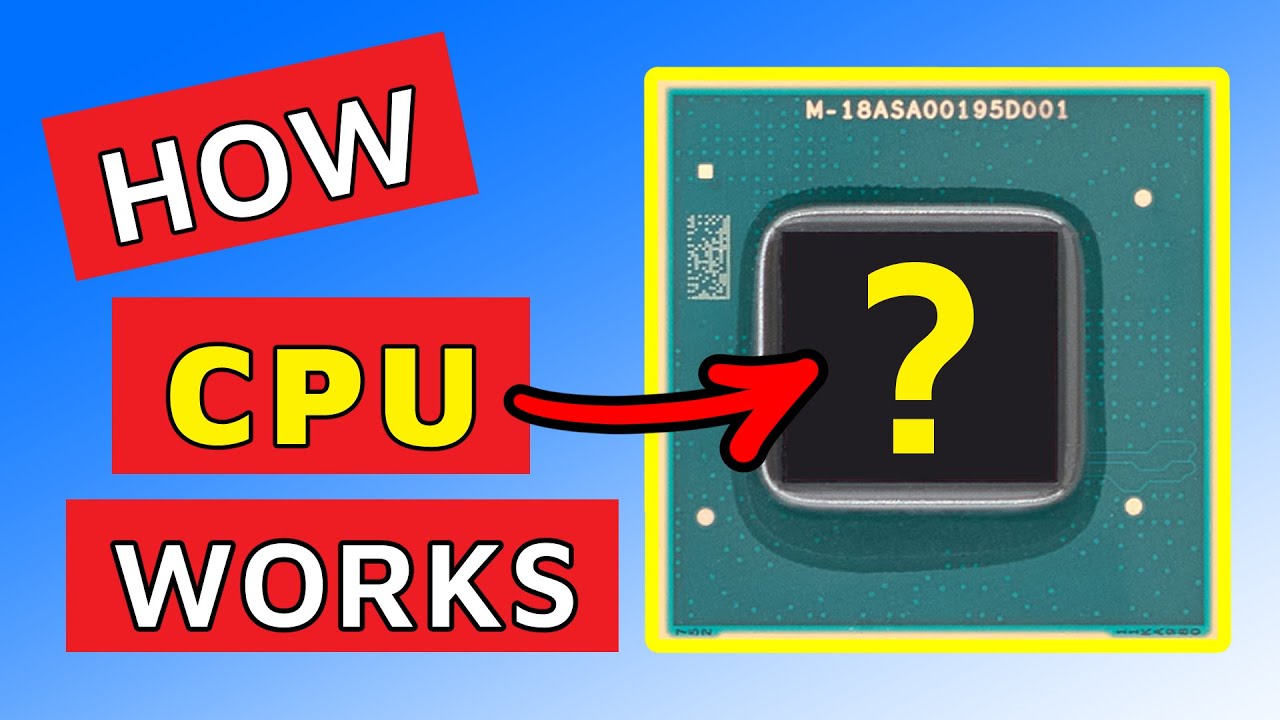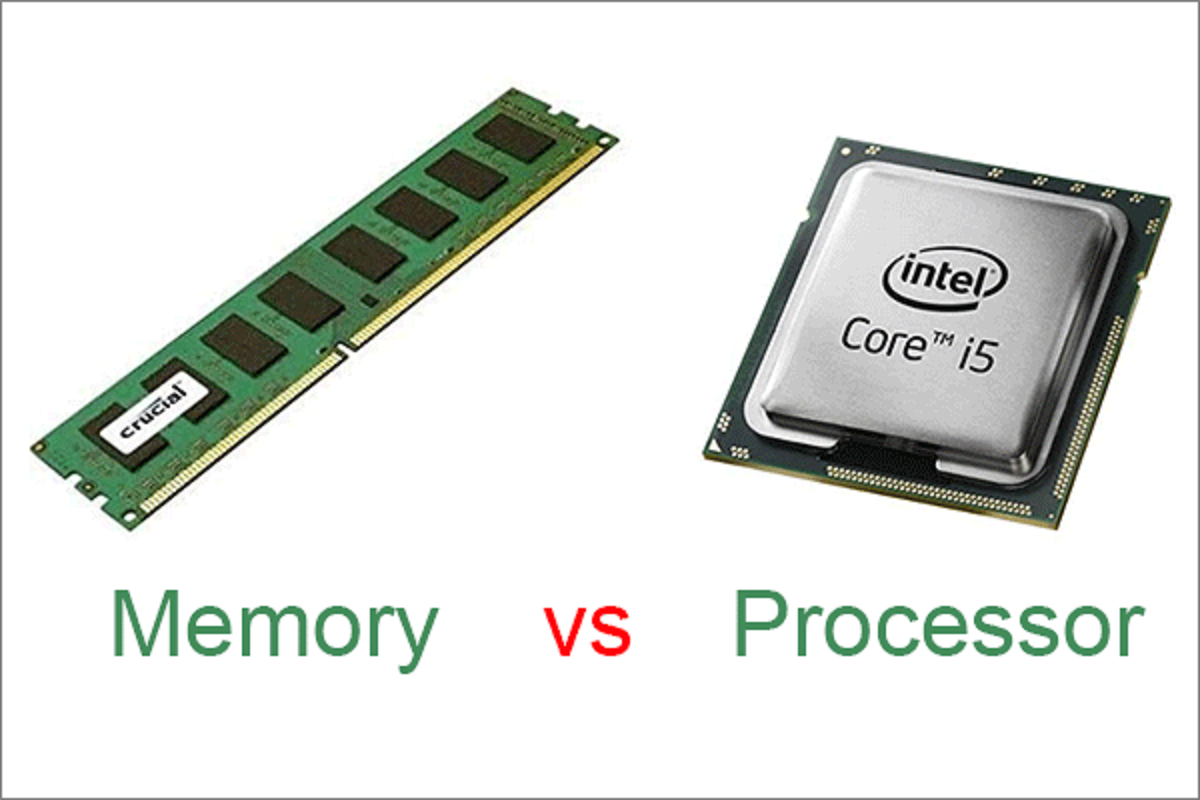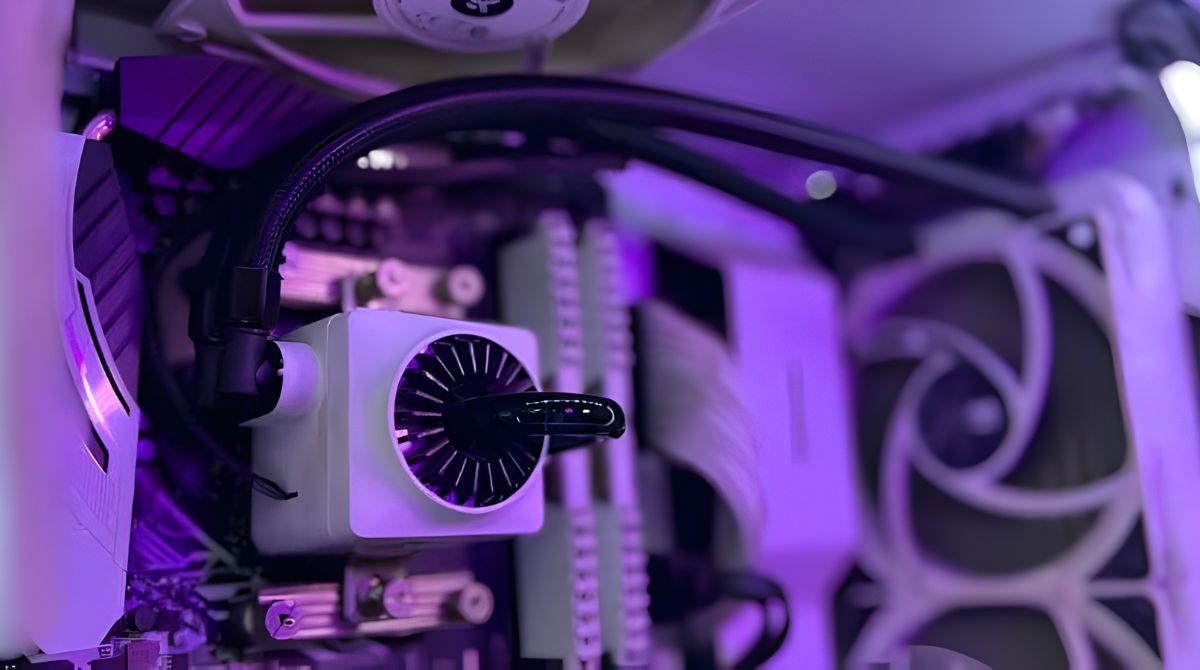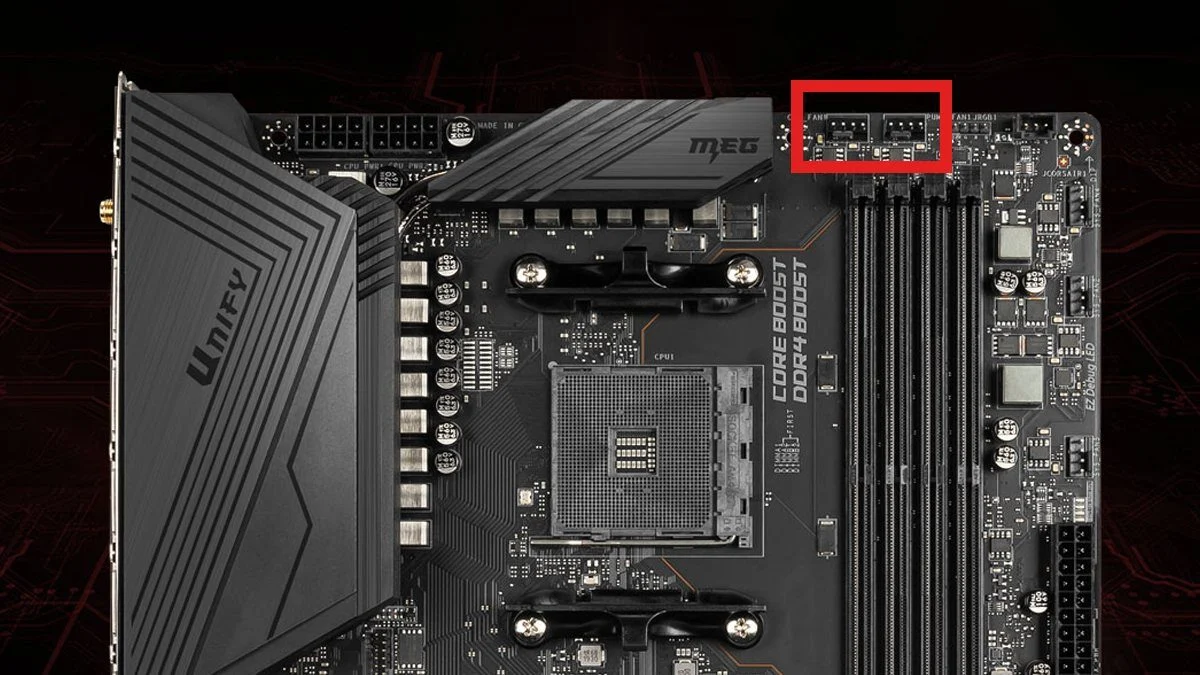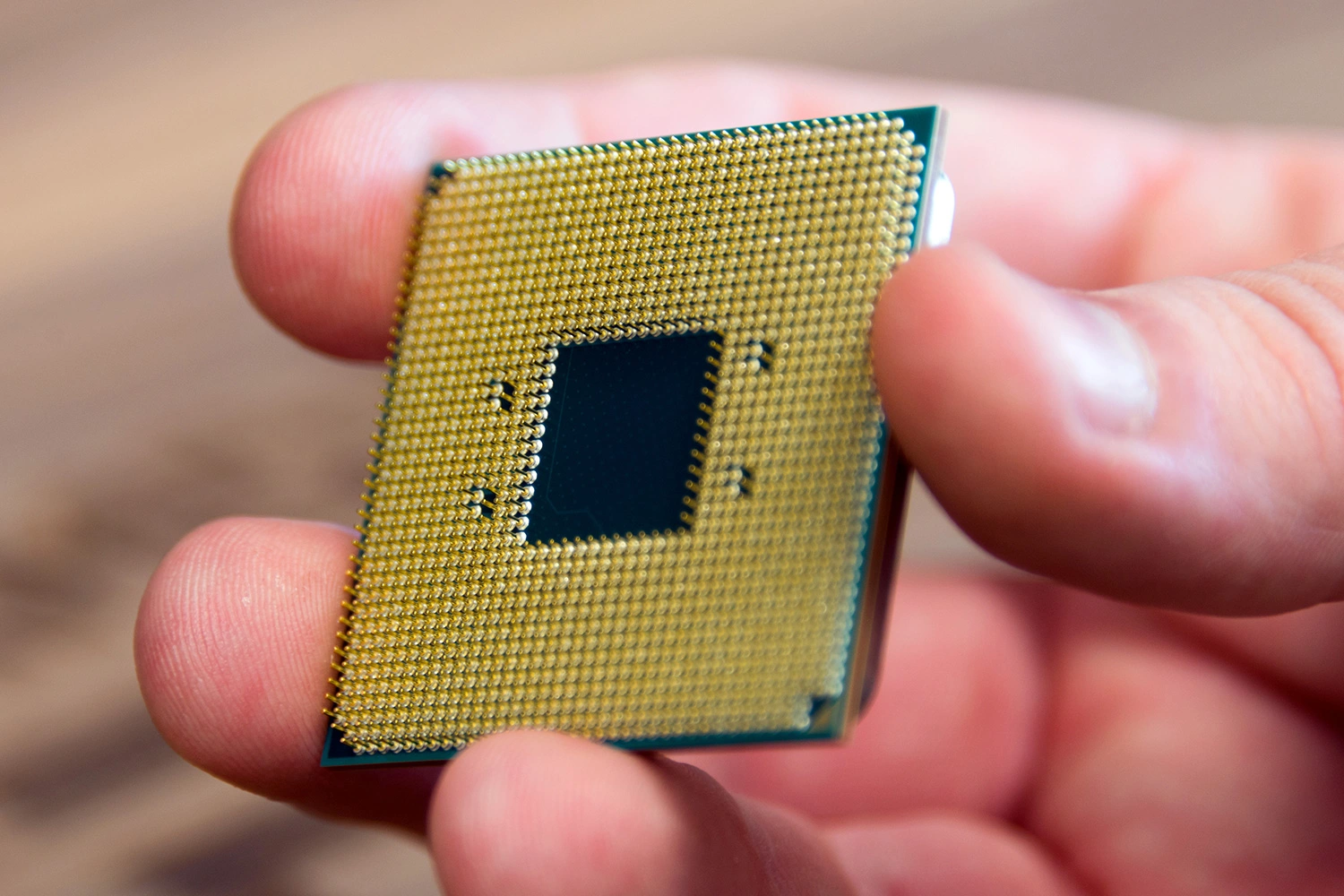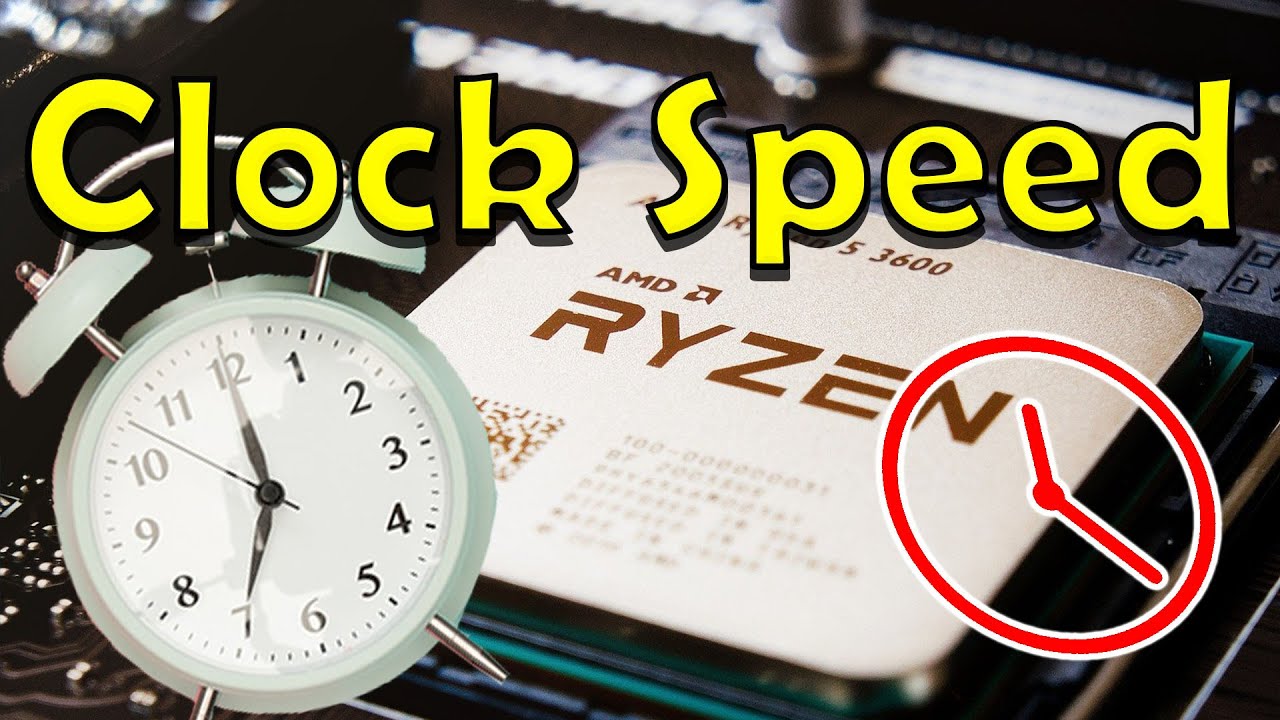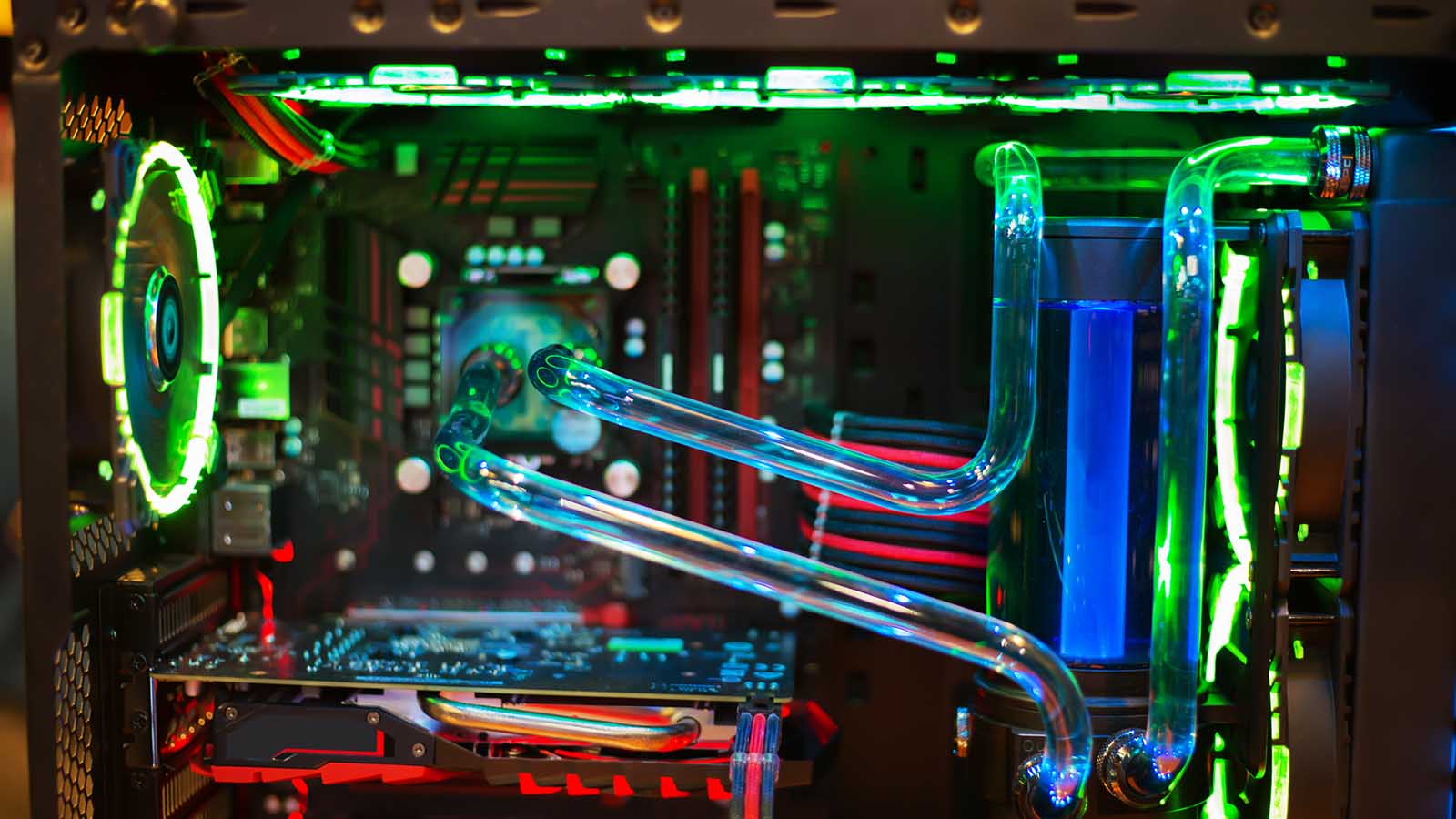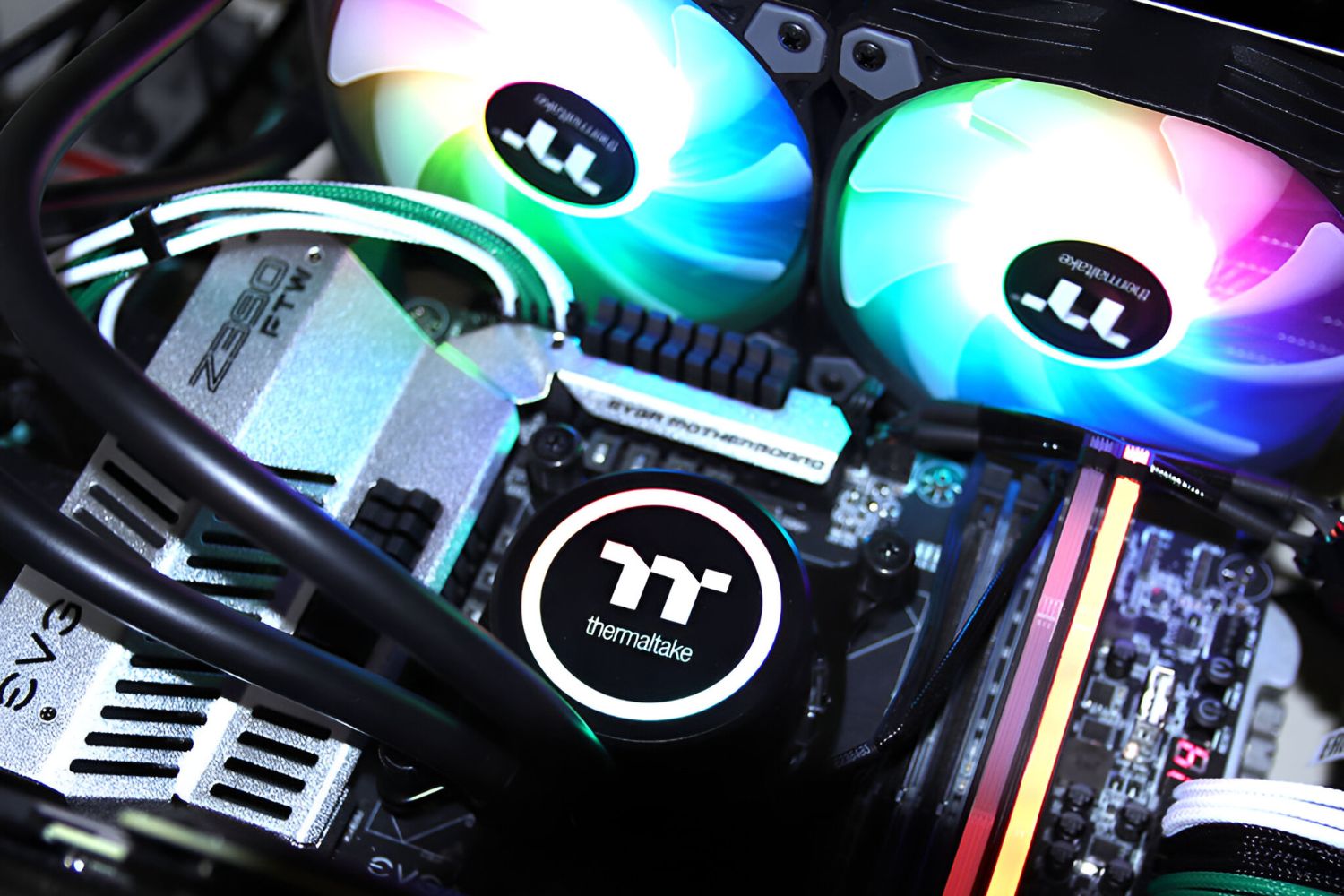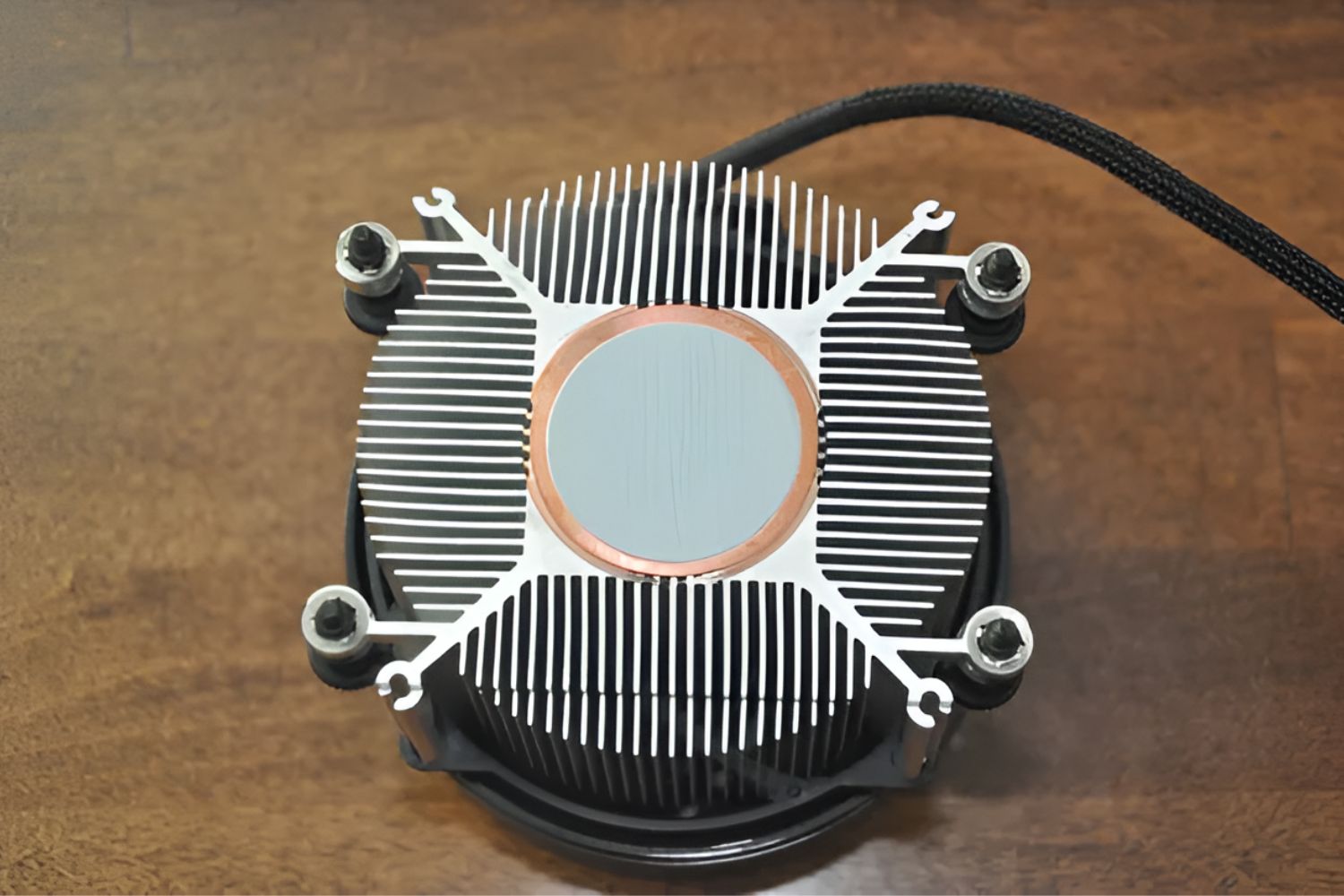Introduction
The central processing unit (CPU) is often described as the brain of a computer. It is the core component responsible for executing instructions, performing calculations, and managing data within a computer system. Without a CPU, a computer would be unable to function.
The CPU is a complex piece of hardware that works in conjunction with software to carry out various tasks. It processes instructions and performs calculations at incredible speeds, allowing computers to perform complex operations in a matter of milliseconds.
In this article, we will delve into the inner workings of a CPU and explore the different components that make it function. We will discuss the control unit, arithmetic logic unit, registers, instruction set, fetch-execute cycle, clock speed, cache memory, CPU architecture, and multicore processors.
Understanding how the CPU works is crucial for anyone with an interest in computer technology, from IT professionals to tech enthusiasts. So let’s dive in and unravel the fascinating world of the CPU.
What is a CPU?
A CPU, or central processing unit, is a key component of a computer system that performs the majority of processing tasks. It is often referred to as the brain of the computer because it executes instructions, performs calculations, and manages data. The CPU is responsible for coordinating and controlling the operations of all other components in the system.
The primary function of a CPU is to fetch, decode, and execute instructions. These instructions are the fundamental building blocks of software programs and define the tasks that a computer must perform. The CPU retrieves these instructions from the computer’s memory, decodes them into a form it can understand, and then carries out the necessary operations or calculations.
To achieve this, the CPU consists of multiple components that work together harmoniously. These components include the control unit, arithmetic logic unit (ALU), registers, and cache memory. Let’s take a closer look at each of these components:
- Control Unit: The control unit is responsible for directing the flow of data and instructions between the CPU, memory, and other peripheral devices. It coordinates the activities of the various CPU components, ensuring that instructions are executed in the correct order and that data is properly stored and retrieved.
- Arithmetic Logic Unit (ALU): The ALU is where most of the calculations and logical operations are performed. It can perform basic arithmetic such as addition, subtraction, multiplication, and division, as well as logical operations like AND, OR, and NOT. The ALU is the primary component responsible for carrying out the mathematical and logical tasks required by software programs.
- Registers: Registers are small, high-speed memory units located within the CPU. They store temporary data and instructions that the CPU needs to access quickly. Registers are used to hold data being processed by the ALU, as well as addresses of memory locations and other control information.
- Cache Memory: Cache memory is a small, ultra-fast memory storage located within the CPU. It stores frequently accessed data and instructions, allowing the CPU to retrieve them quickly without having to fetch them from the slower main memory. Cache memory helps to speed up the execution of instructions and improve overall system performance.
In summary, a CPU is the central processing unit of a computer system, responsible for executing instructions, performing calculations, and managing data. It consists of various components, including the control unit, ALU, registers, and cache memory. Understanding how the CPU operates and interacts with other system components is essential for comprehending the functionality and performance of a computer system as a whole.
Components of a CPU
A CPU (central processing unit) is composed of several key components that work together to carry out the processing and execution of instructions. Understanding these components is essential for grasping how a CPU functions and how it interacts with other parts of a computer system.
Let’s take a closer look at the main components of a CPU:
- Control Unit: The control unit acts as the “traffic controller” of the CPU. It coordinates all the activities, manages the flow of data between different components, and ensures that instructions are executed in the correct sequence. The control unit is responsible for fetching instructions, interpreting them, and initiating the appropriate actions to carry out those instructions.
- Arithmetic Logic Unit (ALU): The ALU is the computational core of the CPU. It is responsible for performing basic arithmetic operations (such as addition, subtraction, multiplication, and division) as well as logical operations (such as AND, OR, and NOT). The ALU receives data from registers and performs the necessary calculations as per the instructions provided by the control unit.
- Registers: Registers are small, high-speed memory units located inside the CPU. They store data and instructions that are currently being processed or are frequently accessed by the CPU. Registers are faster to access than the main memory, which allows for faster data retrieval and calculations. Common types of registers include the accumulator, program counter, and stack pointer.
- Instruction Set: The instruction set is a collection of predefined instructions that the CPU can understand and execute. It defines the operations that the CPU can perform and provides the necessary information for the control unit to carry out those operations. Different CPUs have different instruction sets, each with its own unique set of instructions.
- Cache Memory: Cache memory is a small but high-speed memory located within the CPU. It is used to temporarily store frequently accessed instructions and data. By storing this information closer to the CPU, cache memory reduces the time needed to fetch instructions from the slower main memory, thereby improving overall system performance.
These components work together in a coordinated manner to ensure the proper execution of instructions and the efficient operation of the CPU. Each component plays a crucial role in carrying out different stages of instruction processing, from fetching and decoding instructions to performing calculations and storing data.
By understanding the components of a CPU, we gain insights into how a computer system processes information and carries out various tasks. This knowledge is fundamental in optimizing system performance, designing efficient software programs, and troubleshooting issues that may arise within the CPU.
The Control Unit
The control unit is a vital component of a CPU (central processing unit) that plays a crucial role in coordinating and managing the execution of instructions. It acts as the “command center” of the CPU, directing the flow of data and controlling the operations of other components. Without a control unit, the CPU would not be able to function effectively.
The primary functions of the control unit are:
- Instruction Fetch: The control unit retrieves instructions from the computer’s memory, one by one, by following the program counter, which stores the address of the next instruction to be fetched. It ensures the correct sequence of instructions and transfers them to the next stage of processing.
- Instruction Decode: Once an instruction is fetched, the control unit decodes it, determining which operation needs to be performed and what data is involved. It translates the instruction into a series of signals that can be understood by other components, such as the arithmetic logic unit (ALU) and registers.
- Execution Control: After decoding the instruction, the control unit coordinates and oversees the execution of the instruction. It signals the ALU to perform the necessary calculation or operation and manages the data flow between different parts of the CPU.
- Memory Management: The control unit handles memory-related tasks, such as accessing data from memory and storing the results of calculations. It ensures that data is properly fetched from and stored in the computer’s memory, coordinating data transfers between the CPU and memory.
- Conditional Branching: In some cases, the control unit encounters instructions that involve conditional branching, where the next instruction to be executed depends on a specific condition. The control unit evaluates these conditions and determines the appropriate course of action, directing the CPU to execute the next instruction accordingly.
The control unit relies on a clock signal to synchronize its operations and ensure that instructions are executed in the correct sequence. This clock signal sets a steady rhythm for the CPU, providing a timing reference for fetching, decoding, and executing instructions.
Overall, the control unit is responsible for managing the flow of data and instructions within the CPU, ensuring that instructions are executed in the correct order and coordinating the activities of other components. Its efficient functioning is crucial for the overall performance and reliability of the CPU and the computer system as a whole.
The Arithmetic Logic Unit
The arithmetic logic unit (ALU) is a critical component of a CPU (central processing unit) that performs mathematical calculations and logical operations. It is often referred to as the “heart” of the CPU because it carries out the fundamental computational tasks required by software programs.
The primary functions of the ALU include:
- Arithmetic Operations: The ALU is responsible for executing basic arithmetic operations, such as addition, subtraction, multiplication, and division. It can handle both integer and floating-point calculations, providing the necessary precision for various mathematical tasks. The ALU receives data from registers and performs the requested arithmetic operation, generating the result.
- Logical Operations: In addition to arithmetic operations, the ALU also performs logical operations, such as AND, OR, and NOT. These operations are essential for evaluating conditions, making decisions, and manipulating binary data. The ALU can compare values, test for equality or inequality, and perform other logical operations defined by the instruction set architecture.
- Bit-level Operations: The ALU can operate on individual bits or groups of bits, performing bitwise operations such as shifting, rotating, and masking. These operations are crucial for manipulating binary data at the lowest level, enabling tasks like data encoding, encryption, and data compression.
The ALU receives instructions from the control unit, which specifies the operation to be performed and provides any necessary operands. It then carries out the operation, utilizing the data stored in registers and producing the result. The result is then stored back in a register or memory location for further processing or for use in subsequent instructions.
The ALU operates on binary data, which means that all input values and instructions are represented in binary form, consisting of ones and zeros. Complex operations are broken down into a series of simple binary operations, allowing the ALU to perform calculations at the electronic level, using electronic components like logic gates and flip-flops.
The performance and capabilities of an ALU can vary based on factors such as the CPU architecture, instruction set, and its implementation. High-performance ALUs may support parallel processing, where multiple calculations or operations can be carried out simultaneously, improving overall processing speed.
In summary, the arithmetic logic unit is a crucial component of a CPU that performs arithmetic and logical operations. It executes basic mathematical calculations, evaluates logical conditions, and manipulates binary data. The ALU’s efficiency and capabilities contribute to the overall performance and processing power of the CPU, enabling computers to perform complex computations and tasks.
Registers
Registers are important components within a CPU (central processing unit) that are used to store and manipulate data during the execution of instructions. They are small, high-speed memory units located directly within the CPU, allowing for quick access to data and instructions that the CPU needs to work with.
The primary functions of registers include:
- Data Storage: Registers store data that is being actively processed by the CPU. This can include input values, intermediate results of calculations, and memory addresses. By storing data directly within the CPU, registers enable faster access times and improve overall processing efficiency.
- Instruction Storage: Registers also hold instructions that are being executed by the CPU. Instructions are fetched from memory and stored in registers to facilitate quick decoding and execution. The program counter, a specific type of register, holds the memory address of the next instruction to be fetched.
- Temporary Storage: Registers act as temporary storage locations for data that needs to be accessed frequently or manipulated during the execution of instructions. This helps reduce the need to access slower system memory, enhancing computational speed.
- Address Storage: Some registers store memory addresses or other control information used by the CPU. For example, the memory address register (MAR) holds the address of the memory location being read from or written to, while the stack pointer register keeps track of the top of the stack in memory.
- Operand Processing: Registers provide the CPU with data operands needed for performing calculations and logical operations. The arithmetic logic unit (ALU) typically receives data from registers, carries out the requested operation, and stores the result back into a register for further processing or storage.
Registers are typically organized into different types based on their purpose and usage. Common types of registers include the accumulator, which holds intermediate results, the general-purpose registers used for temporary storage, and the program counter for tracking the current instruction address.
The size and number of registers in a CPU architecture can vary, depending on the design and intended purpose. Increasing the number of registers allows for more efficient data handling and faster execution of instructions. However, more registers also require additional hardware and can increase the complexity and cost of the CPU.
Overall, registers are vital components within a CPU that provide temporary storage for data and instructions during the execution of instructions. By storing frequently accessed data and reducing the need for memory access, registers play a crucial role in enhancing the computational speed and efficiency of a CPU.
Instruction Set
The instruction set of a CPU (central processing unit) defines the collection of instructions that the CPU can understand and execute. It serves as the interface between the hardware and the software, allowing the CPU to carry out various operations and tasks as defined by the instructions.
The instruction set typically includes a wide range of operations that the CPU can perform, such as arithmetic calculations, logical operations, data transfers, and control flow instructions. These instructions are represented in a specific format, often encoded as binary values that the CPU can interpret and execute.
The instruction set can be categorized into several types:
- Data Transfer Instructions: These instructions are used to move data between memory and registers or between different registers within the CPU. They facilitate the movement of data needed for computations and manipulations.
- Arithmetic and Logical Instructions: These instructions perform basic arithmetic operations (addition, subtraction, multiplication, division) and logical operations (AND, OR, NOT) on data stored in registers. They enable calculations and logical evaluations required by software programs.
- Branch and Jump Instructions: These instructions control the flow of execution by enabling conditional branching, unconditional jumping, and subroutine call and return operations. They allow for decision-making and looping within programs.
- Control Instructions: These instructions manage the overall control of the CPU, including starting and stopping the execution of programs, initializing hardware devices, and handling interrupts and exceptions.
- Specialized Instructions: Some CPUs may include specialized instructions that are specific to certain tasks, such as multimedia processing, encryption, or floating-point calculations. These instructions provide enhanced capabilities for specific applications or domains.
Different CPUs can have varying instruction set architectures (ISA) based on their design, intended purpose, and compatibility. Common examples of ISAs include x86, ARM, MIPS, and PowerPC, which are widely used in desktop computers, mobile devices, and embedded systems.
Developers and programmers write software programs using high-level programming languages, and compilers or assemblers translate these programs into machine code instructions that the CPU can execute. Understanding the instruction set helps programmers optimize their code, utilize available resources, and achieve desired performance outcomes.
In summary, the instruction set of a CPU defines the set of instructions that the CPU can understand and execute. It includes operations for data transfer, arithmetic and logical calculations, control flow, and specialized tasks. The instruction set serves as a bridge between the hardware and software, enabling the CPU to carry out tasks specified by software programs.
Fetch-Execute Cycle
The fetch-execute cycle is a fundamental process that a CPU (central processing unit) follows to execute instructions. It consists of two main steps: the fetch phase and the execute phase. This cycle allows the CPU to repeatedly fetch instructions from memory, decode them, and carry out the specified operations.
Here’s a breakdown of the fetch-execute cycle:
- Fetch Phase: In this phase, the CPU retrieves the next instruction from memory. It starts by reading the program counter (PC), which holds the memory address of the next instruction to be fetched. The CPU sends this address to the memory unit, which retrieves the instruction from the corresponding memory location and transfers it to the instruction register (IR) within the CPU.
- Decode Phase: Once the instruction is fetched, the control unit decodes it. It determines the operation to be performed and identifies the operands needed for the execution. The control unit also generates control signals that communicate with other components of the CPU, such as the arithmetic logic unit (ALU) and registers, to carry out the instruction.
- Execute Phase: In this phase, the CPU performs the operation specified by the instruction. The ALU receives the necessary data from registers, executes the arithmetic or logical operation, and stores the result back into a register or memory location. Other components, such as the control unit and memory unit, assist in coordinating the execution and data flow.
- Update Program Counter: After executing an instruction, the program counter is updated to point to the address of the next instruction to be fetched. This is usually done by incrementing the program counter by the length of the instruction or jumping to a different address, depending on the branching or looping instructions encountered.
The fetch-execute cycle continues indefinitely, allowing the CPU to sequentially fetch, decode, and execute instructions from memory until the program is completed or an interruption occurs.
Efficient execution of the fetch-execute cycle is crucial for the performance of a CPU. Faster memory access and optimized instruction decoding contribute to overall system speed. Techniques like pipelining and branch prediction are also employed to improve the efficiency of the cycle, allowing for the concurrent execution of instructions and reducing waiting times.
Understanding the fetch-execute cycle is fundamental when it comes to analyzing the performance characteristics and programming considerations of a CPU. It provides insights into how instructions are processed and how the interaction between different CPU components occurs to execute instructions and perform computations.
Clock Speed
The clock speed of a CPU (central processing unit) refers to the frequency at which its internal operations are synchronized. It is measured in hertz (Hz) and determines how fast the CPU can execute instructions and process data. A higher clock speed generally indicates a faster CPU with the ability to perform more operations per second.
The clock speed is controlled by an internal oscillator known as the system clock. This clock generates regular electrical pulses that act as a timing reference for the CPU’s operations. Each pulse, known as a clock cycle, represents a discrete unit of time during which the CPU can perform a task.
During each clock cycle, the CPU can fetch, decode, and execute one or more instructions. The number of instructions executed per clock cycle depends on the architecture and design of the CPU. Modern CPUs often employ techniques such as pipelining and superscalar execution to maximize instruction throughput and improve overall performance.
It’s important to note that clock speed alone is not the sole indicator of a CPU’s performance. The efficiency and architecture of the CPU, as well as other factors like cache size, instruction set, and the number of cores, also play significant roles in determining overall performance.
In the past, the sole focus was on increasing clock speeds to improve CPU performance. However, as clock speeds reached practical limits due to power consumption and heat generation, CPU manufacturers shifted their focus to other areas, such as optimizing instruction execution and introducing multiple cores.
Overclocking is a technique where enthusiasts increase a CPU’s clock speed beyond its specified limits. While this can provide a temporary performance boost, it also increases power consumption and heat generation, which can lead to stability issues and potentially shorten the lifespan of the CPU.
When considering CPUs, it’s essential to strike a balance between clock speed and other factors. For tasks that rely heavily on single-threaded performance, such as gaming and certain applications, higher clock speeds can provide a significant advantage. On the other hand, tasks that are more parallelizable, such as video rendering and scientific simulations, can benefit from CPUs with more cores, even if the clock speed is lower.
In summary, clock speed is a crucial factor in determining a CPU’s performance. It represents the frequency at which its internal operations are synchronized and influences the number of instructions executed per second. However, other factors such as architecture, cache size, instruction set, and the number of cores also impact overall performance. When selecting a CPU, it’s important to consider both clock speed and other relevant features to meet specific task requirements.
Cache Memory
Cache memory is a high-speed storage system located within a CPU (central processing unit) or between the CPU and the main memory. Its purpose is to store frequently accessed data and instructions, allowing for faster retrieval and execution, and improving overall system performance.
The primary function of cache memory is to bridge the speed gap between the CPU and the relatively slower main memory. It operates on the principle of locality, which states that recently accessed data and instructions are likely to be accessed again in the near future. By keeping this data in cache memory, the CPU can access it much faster than if it had to retrieve it from the main memory.
Cache memory is organized into several levels or layers, commonly referred to as L1, L2, and L3 caches. The L1 cache is the closest to the CPU and has the smallest capacity but the fastest access time. It usually consists of separate instruction and data caches, storing frequently accessed instructions and data, respectively.
When the CPU needs to access data or instructions, it first checks the L1 cache. If the information is present, it is retrieved quickly, avoiding the need to access the main memory. If the data is not found in the L1 cache, the CPU proceeds to check the higher-level caches, such as L2 and L3, with each level having larger capacity but slower access times. If the data is not present in any of the caches, a cache miss occurs, and the CPU must fetch the data from the main memory and store it in the cache for future access.
Cache memory is designed to dynamically manage the storage of data and instructions, constantly adjusting its contents based on the CPU’s requirements. Caching algorithms, such as LRU (Least Recently Used) or LFU (Least Frequently Used), are utilized to determine which data to keep in the cache and which data to evict when space is needed.
In addition to improving performance, cache memory also helps to reduce power consumption. Since accessing data from cache requires less energy compared to retrieving it from the main memory, cache memory greatly enhances the power efficiency of a CPU.
Cache memory size, organization, and speed vary between different CPU architectures and models. CPUs designed for high-performance computing often have larger caches, enabling them to store more data and instructions, while lower-end CPUs may have smaller caches due to cost and power constraints.
In summary, cache memory is a key component of a CPU that stores frequently accessed data and instructions, allowing for faster retrieval and execution. It helps bridge the speed gap between the CPU and main memory, improving overall system performance. Cache memory size, organization, and speed can vary, and different caching algorithms are implemented to optimize data storage in the cache.
CPU Architecture
CPU architecture refers to the structural design and organization of a central processing unit (CPU). It defines the functional units, data paths, control mechanisms, and memory hierarchy that make up the CPU. The architecture determines how the CPU executes instructions, processes data, and interacts with other system components.
There are several different CPU architectures, each with its own unique design principles and characteristics. Here are some common CPU architectures:
- Von Neumann Architecture: This architecture is named after John von Neumann and is the foundation for most modern CPUs. It consists of a single bus that carries both instructions and data. Von Neumann CPUs sequentially fetch and execute instructions, storing both program instructions and data in the main memory.
- Harvard Architecture: In contrast to Von Neumann, the Harvard architecture uses separate buses for instructions and data. This allows for simultaneous fetching of instructions while accessing data, which can improve performance. Harvard architecture is commonly used in embedded systems and certain specialized processors.
- Superscalar Architecture: Superscalar CPUs can execute multiple instructions in parallel by having multiple instruction pipelines. These architectures employ techniques like instruction-level parallelism and out-of-order execution to maximize instruction throughput. Superscalar CPUs are often found in high-performance computing systems and servers.
- Vector Architecture: Vector processors specialize in performing computations on large arrays of data using vector instructions. These processors excel at tasks like scientific simulations, image processing, and computer graphics, which involve data-parallel operations.
- RISC (Reduced Instruction Set Computing) Architecture: RISC CPUs have a simplified instruction set, with a focus on executing instructions quickly. They typically have a smaller set of instructions but execute them more efficiently. RISC architectures place a greater burden on compilers to optimize code.
- CISC (Complex Instruction Set Computing) Architecture: CISC CPUs have a large and complex instruction set, incorporating a wide range of operations that can be executed within a single instruction. CISC architectures aim to reduce the number of instructions required to accomplish tasks.
The choice of CPU architecture depends on factors such as the intended application, performance requirements, power constraints, and software compatibility. Each architecture has different strengths and weaknesses, making certain architectures more suitable for specific tasks or environments.
Modern CPUs integrate multiple cores, allowing for parallel execution of instructions. This shift towards multicore architectures enables higher computational power and improved multitasking capabilities. These multicore CPUs can be symmetric (SMP) or asymmetric (AMP) in their core configurations.
CPU architecture also impacts the overall system architecture, including aspects such as memory hierarchy, bus topology, and the interaction with other components like the memory, graphics card, and peripherals.
In summary, CPU architecture determines the design, functionality, and performance of a CPU. Different architectures, such as Von Neumann, Harvard, superscalar, vector, RISC, and CISC, offer distinct approaches to executing instructions and processing data. The choice of CPU architecture depends on specific requirements and considerations such as performance, power efficiency, and compatibility.
Multicore Processors
Multicore processors are CPUs (central processing units) that contain multiple cores, or processing units, on a single chip. These cores can simultaneously execute instructions, allowing for parallel processing and increased computational power. Multicore processors have become increasingly prevalent in modern computing systems and have revolutionized the way software and applications are designed and optimized.
The key characteristics and benefits of multicore processors are as follows:
- Parallel Execution: Multicore processors can execute multiple instructions at the same time by utilizing multiple cores. This enables simultaneous processing of tasks and improves overall system performance. Parallel execution is especially beneficial for tasks that can be divided into smaller, independent threads, such as multimedia applications, scientific simulations, and data-intensive computations.
- Multitasking and Responsiveness: With multiple cores, multicore processors can handle multiple tasks simultaneously, leading to better multitasking capabilities. This results in improved system responsiveness, as tasks can be executed in parallel, preventing bottlenecks and reducing delays.
- Improved Performance: Multicore processors offer significant performance gains compared to single-core processors, especially in highly parallelizable tasks. By dividing workloads among multiple cores, multicore processors can achieve higher throughput and faster execution times.
- Energy Efficiency: Despite the increased performance, multicore processors can also offer improved energy efficiency. Since the workload is distributed among multiple cores, each core can operate at a lower frequency, reducing power consumption and heat generation.
- Scalability and Future-Proofing: Multicore processors provide scalability and future-proofing for systems. As software and applications become more optimized for parallel processing, multicore processors are ready to take advantage of this optimization. Additionally, upgrading a system with a multicore CPU can be a cost-effective way to improve performance without the need for a complete system overhaul.
Developers and programmers need to design software applications that can effectively utilize the parallel processing capabilities of multicore processors. This often involves parallel programming techniques, such as threading and task-based parallelism, to divide tasks into smaller, independent units that can be executed concurrently on different cores. Proper utilization of multicore architectures can significantly improve application performance and responsiveness.
It’s worth noting that the number of cores does not always directly correlate with linear performance improvements. The efficiency of utilizing multiple cores depends on the nature of the application, the level of parallelism present in the tasks being performed, and how well the software is optimized to take advantage of multicore architectures.
Overall, multicore processors have revolutionized the computing landscape by providing increased performance, multitasking capabilities, and energy efficiency. They offer a scalable and future-proof solution for handling the demands of modern software and applications that rely on parallel processing.
Conclusion
Understanding the inner workings of a CPU (central processing unit) is crucial for anyone interested in computer technology. From the control unit and arithmetic logic unit to registers, cache memory, and multicore processors, each component plays a vital role in the execution of instructions and the processing of data.
A CPU acts as the brain of a computer, responsible for executing instructions, performing calculations, and managing data. The control unit directs the flow of data and coordinates the activities of other components, while the arithmetic logic unit handles mathematical and logical operations.
Registers provide temporary storage for data and instructions, allowing for quick access and manipulation during execution. Cache memory brings frequently accessed data and instructions closer to the CPU, reducing the time needed for retrieval from the slower main memory.
The instruction set defines the range of operations that a CPU can understand and execute, enabling the CPU to carry out tasks specified by software programs. The fetch-execute cycle ensures the orderly execution of instructions by fetching, decoding, and executing them in a continuous loop.
Clock speed represents the frequency at which a CPU’s internal operations are synchronized, indicating how fast the CPU can execute instructions. However, other factors such as architecture, cache size, instruction set, and the number of cores also impact performance.
CPU architecture defines the design and organization of the CPU, impacting how it executes instructions, processes data, and interacts with other system components. From von Neumann and Harvard architectures to superscalar, vector, RISC, and CISC architectures, each has unique characteristics and advantages.
Multicore processors, with their ability to execute instructions in parallel, provide increased computational power, improved multitasking capabilities, and enhanced system responsiveness. Proper utilization of multicore architectures can optimize software performance and scalability.
Overall, a deep understanding of CPU components and their functions allows for better appreciation of the inner workings of computer systems. It empowers individuals to make informed decisions, optimize software and hardware configurations, and drive advancements in computer technology. By delving into the intricacies of CPUs, we can unlock the full potential of these remarkable devices in our rapidly advancing digital world.







